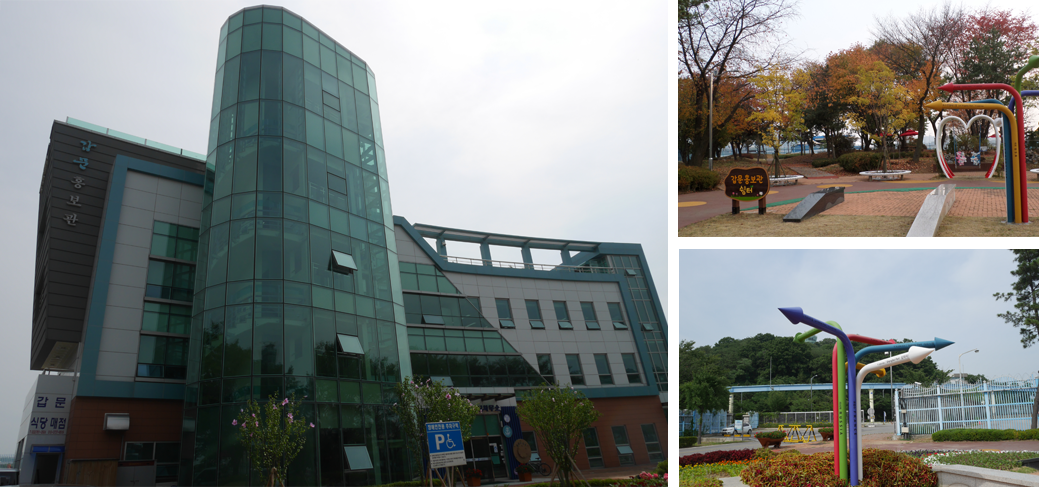Initial registration date : 2020.12.01 |
Date of final update : 2024.05.14 |
 464
464The Port of Incheon
※ The information may have changed since the initial registration date. Be sure to check before you travel.
The sea has played a significant role in human history. It has been a significant source of economic values not only in fishing but also in transportation.
The Port of Incheon is located in Jung-gu, Incheon. It is Korea's largest port on the west coast. It has been the gateway to Seoul, the capital of the country, for more than a century.
Following the Treaty of Ganghwa signed in 1876 between Korea and Japan, Korea opened the ports of Busan, Wonsan, and then Incheon (January 1883) for international trade. The Port of Incheon has played a significant role in the country's modernization and economic development ever since and in exponential growth of Incheon.

There is an intriguing episode about the time when Korea opened the Incheon Port for foreign trade. Jajangmyeon (noodles in black bean sauce), one of the most favorite dishes among Koreans, was supposedly invented due to the opening of Incheon Port. In the 1880, Incheon was populated by a number of foreigners including merchants, missionaries and laborers most of whom were from Shandong, China for stevedoring work at the port. The Chinese workers cooked their traditional noodle dish called zhajiangmien as a kind of instant food to save time and money. After a while, Chinese restaurants opened doors in Incheon and began to serve the Korean version of the noodle dish in the name of jajangmyeon, which has become a totally different dish from its Chinese precursor.
Coming back to the story of the Incheon Port, as the Japanese colonial (1910-1945) began, the port of Incheon became a logistic hub for the Japanese military. Facilities were set up on newly reclaimed land. The Incheon area soon emerged as the largest industrial region in Korea then. Following the Korean War (1950-1953), Korea began to launch a series of economic development plans at the beginning of the 1960s. The government promoted export-oriented industrialization policies. As the country's aviation industry was still in its infancy, international land transportation was out of the question because of the national division. Practically speaking, South Korea was and still is an island when it comes to international logistics, hence marine transportation was the only option. The role of the port of Incheon continued to grow. Huge investments have continued to be made in the port. Towards the 1990s, the port of Incheon recognized that compared to its tremendous capacity to handle cargo, it paid little attention to passenger transport. Since the end of 1990s, it has been transporting a huge number of international tourists mainly from China though international passenger terminals.

The Incheon Port with Asia's Largest Lock Gate Facilities
The port of Incheon built its first floodgate in 1918 which was the first of its kind in the country. The closest to the Seoul Capital Area, the port Incheon was the country's largest port then in terms of the quantities of goods transported. Still large vessels could not anchor at the port due to a 10-meter difference between ebb and flow of the tide and subsequent considerable silting and accumulation of sand at the port. Against such backdrops, the port needed to construct floodgates to make the port operational for large vessels around the clock. In 1974, the port built super modern large docks that could accommodate 30 large vessels simultaneously, the largest in Asia. It has further expanded since then and now 48 vessels can moor at the port at the same time whether they are car ferries, container ships, RORO ships or bulk carriers.The floodgates of the Incheon Port are situated between Mt. Wolmisan and South Wolmido Island. Visitors can enjoy seasonal beauty throughout the year. The floodgates are closed to the public, except for during a special period when visitors can view large cargo and passenger ships coming into and going out of the port through several docks in front of their eyes.

Floodgate Exhibition Center to help understand the floodgate
Floodgate Exhibition Center is located near the floodgates of the port. It is open to the public on weekdays. It offers visitors diverse information on the history of the port of Incheon and its floodgates and the characteristics and values of the floodgates through advanced media. It also features various models and other displays to emphasize the significance of the port as the hub of Korea-China trade and the logistical center of the Republic of Korea. It is a pleasant place worth visiting to deepen one's understanding of the roles and significance of the port of Incheon and the impact of the port on the regional development including the city's cultural diversity. Besides, it is a wonderful place to view the port close by including its diverse facilities and vessels anchored at the port from its observation deck on the 5th floor.

-
Hours & Admission to Floodgate Exhibition Center
- Location: 376, Wolmi-ro, Jung-gu, Incheon
- Hours of Operation: 09:00 - 18:00
- Days: Monday to Friday (Closed: Saturdays, Sundays and public holidays)
- Group Visits: Reservation required one week in advance
- Admission: free









